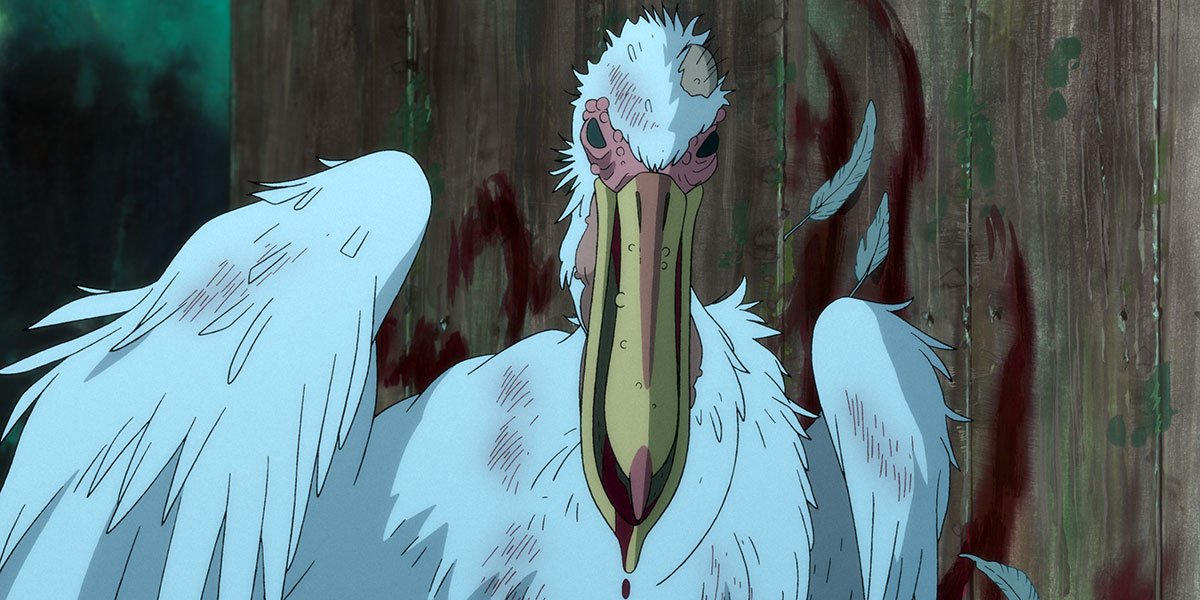The Boy and the Heron: Animation God Miyazaki Creates a Winged Wonderland and Asks Us to Ask
By Chris Knight
Rating: A-plus
The Boy and the Heron is a treat for the eyes, the ears and the mind. Or the soul, if you prefer.
Let’s start with the eyes. Writer/director Hayao Miyazaki, whose Studio Ghibli films have been awing audiences for 40 years now, is known for his wondrous animated images of natural splendour, fantastical creatures, and literal flights of fancy. The Boy and the Heron, set in 1943, opens in Tokyo but quickly moves to the countryside, where we get all these elements and more.
Mahito Maki (Soma Santoki) is 12 years old and mourning the loss of his mother, who died in a hospital fire. His father has wed his late wife’s younger sister Natsuko. And if that weren’t enough for the lad to wrap his head around, a strange grey heron has been taunting him.
When he goes in pursuit of the creature, he finds that it’s actually a little man in a bird suit. Like a certain white rabbit, the heron leads Mahito into an underground world full of wonders and not a little danger.
This is also where we find most of the imagery, sublime and trippy, as though the animators had dipped into your dreams for inspiration. A wooden boat is tossed on high waves, captained by the redoubtable Kiriko, who is somehow a younger version of one of the cackling old maids who serve Mahito’s family in the real world. A night sky is streaked with meteoric trails of light. There is a ruined, sunken library; a vast agora, sunlit and flanked by towering pillars; and an endless hall of doors leading to who knows where or when.
There are also floaty white marshmallow creatures called warawara, similar to the tree spirits in Miyazaki’s Princess Mononoke but even cuter. They are so cute, in fact, that if this were a Disney movie I’d suspect a consumerist trap. Instead, I just cooed and smiled in the scene where they wafted by on a summery breeze. (But just to be clear I do want to buy one. I can’t help it.)
Mahito, old enough to have his own will, but young enough to still be swayed by magic, traverses this landscape in search of Natsuko, who has disappeared. The heron proves a useful companion but an inconstant one, saving the boy’s life one moment, prepared to abandon him the next.
There are other avian perils, including a massive flock of hungry pelicans, and a society of giant budgerigars introduced with a line I can guarantee you’ve not heard in a film before: “That’s a big parakeet.”
It’s easy to overlook the score of The Boy and the Heron, in part because your senses may already be overwhelmed by the visuals, but also because it’s so deceptively simple, often no more than a lone, quiet piano backed by a few strings.
But the film’s music is a perfect accompaniment to its dreamlike grandeur and pacing, which often finds our hero whisked out of one locale only to land in another, through transitions that surprise and delight. You’ll have heard composer Joe Hisaishi’s work before if you know Miyazaki, as he’s scored all but one of the master’s films.
Which brings us to the heart and soul of The Boy and the Heron, which is not a simple core to reach. Is it about a young person learning to be less selfish? To give up the ghost of his dead mother and open himself up to a new parent? To learn to respect budgies? Or is it possibly just a fantastical dreamscape designed to unlock your own thoughts and spiritual desires?
There’s a clue of sorts in the film’s Japanese title, which translates as How Do You Live? That’s also the title of a 1937 novel by Genzaburo Yoshino about a 15-year-old boy, and it’s a book Mahito finds in his room, left years ago by his mother for “grown-up Mahito.”
Perhaps the film is, as suggested by Yoshino’s grandson after his first viewing, a way to commune with your ancestors.
But it’s also worth noting that an early preview screening of the film - which was released in Japan without any trailers or other advertising - included a message from the director that was read over the end credits: “Perhaps you didn’t understand it. I myself don’t understand it.”
Thus, have we been given special dispensation as viewers (and listeners, and thinkers). It’s OK if you don’t get it right away, or indeed at all. Like the query “How Do You Live?” there is not only no right answer; there may not be an answer at all.
But that doesn’t take away from the joy of the question. If there is a message in The Boy and the Heron, it is a simple one, perhaps the simplest one of all. It’s asking us to ask.
The Boy and the Heron. Directed by Hayao Miyazaki. Starring Soma Santoki, Masaki Suda, and Yoshina Kimura. Opens Dec. 8 in theatres.



